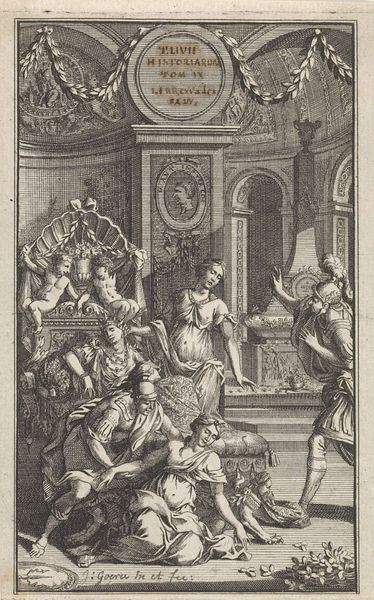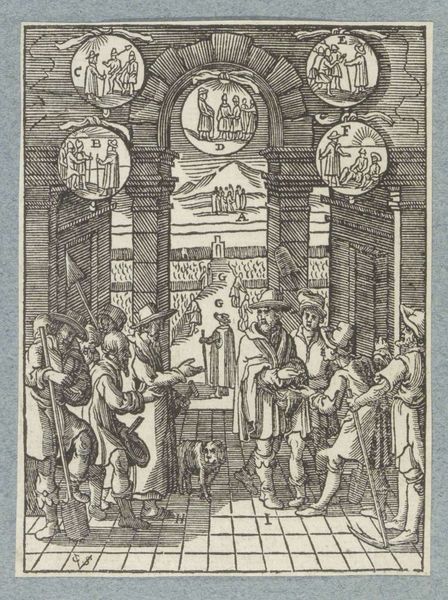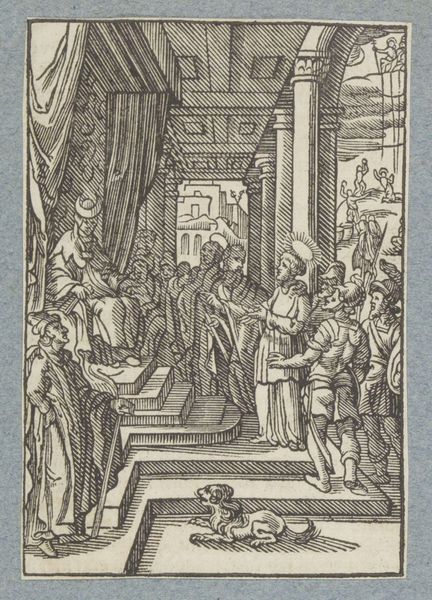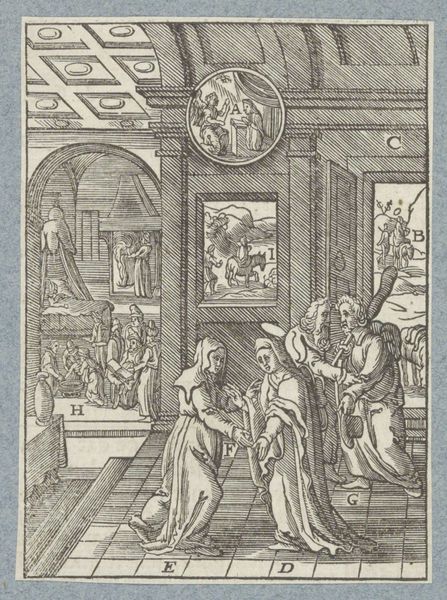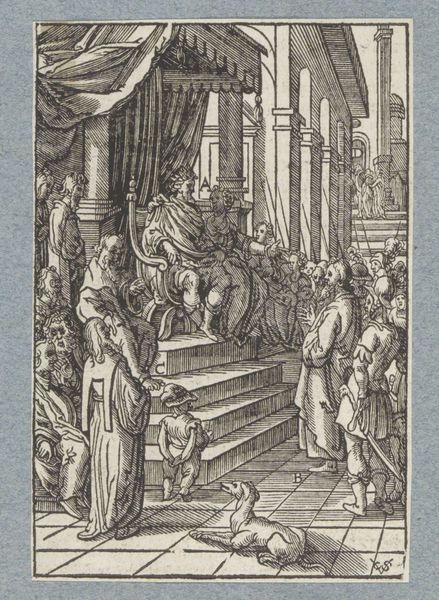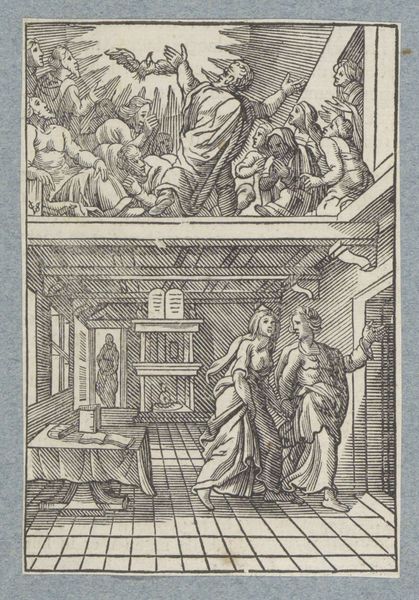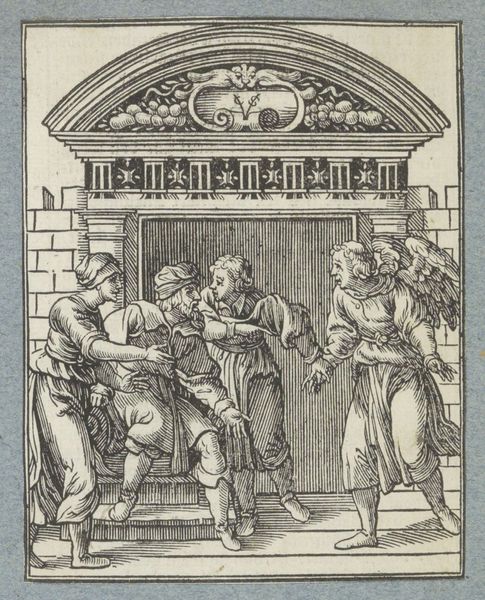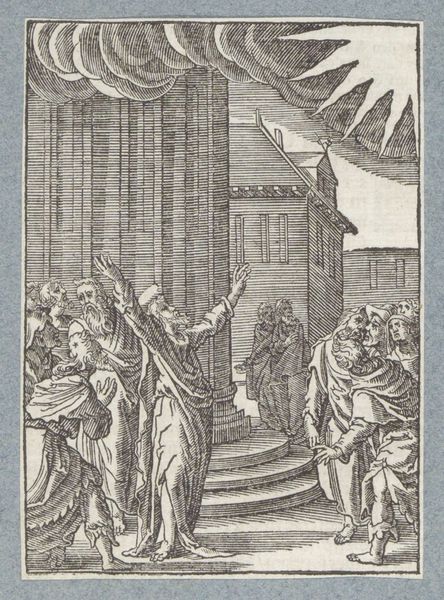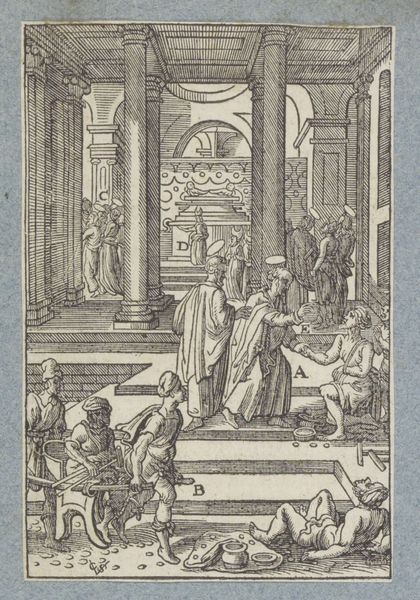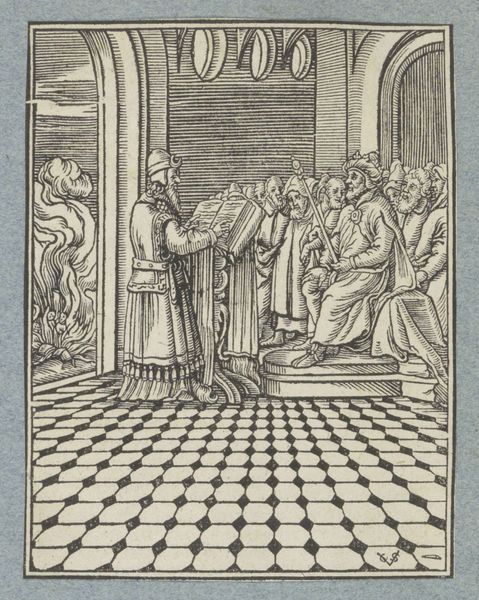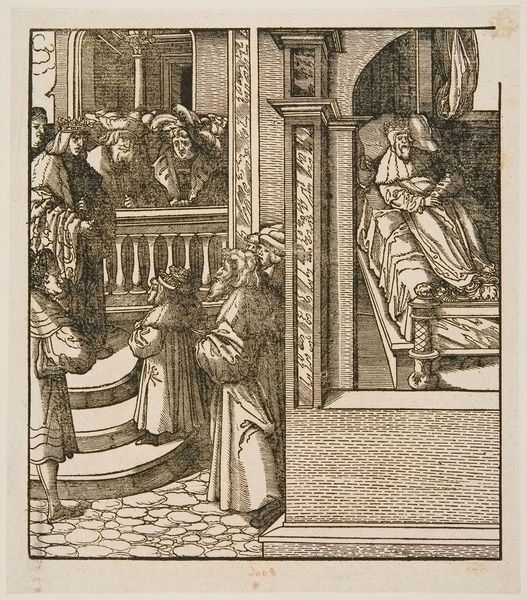
print, engraving
#
narrative-art
#
baroque
# print
#
figuration
#
genre-painting
#
history-painting
#
engraving
Dimensions: height 103 mm, width 73 mm
Copyright: Rijks Museum: Open Domain
Editor: This engraving, "The Prodigal Son Receiving his Inheritance," created by Christoffel van Sichem II in 1629, strikes me as a powerful statement about wealth and family. There's a strong contrast between the well-dressed figures and the beggar on the steps. How do you interpret the scene in the context of its time? Curator: That’s an insightful observation. Consider the historical backdrop: the Dutch Golden Age. This wasn't simply a time of economic prosperity, but also of intense social stratification and moral debate fueled by religious ideologies. What narrative does the artist construct through this lens? Editor: I see a literal interpretation of the biblical story. But is there more to it than just illustrating a parable? Curator: Exactly. Think about the power dynamics embedded in this image. Who benefits from this transfer of wealth? How are class distinctions reinforced, even under the guise of a moral tale? Notice how the lavish surroundings contrast with the figures in need; it speaks volumes about societal priorities. Editor: So, it’s a critique of the unequal distribution of wealth masked by religious justification? The positioning of the beggar certainly emphasizes that divide. Curator: Precisely. And that visual juxtaposition prompts us to examine how narratives can both reflect and perpetuate social norms, and even serve as vehicles for questioning the status quo. What do you think this image suggests about accountability? Editor: I see how it critiques blind faith in traditional power structures, which leads to social indifference and the perpetuation of poverty. It prompts reflection on how seemingly charitable actions can have complex ethical dimensions. Curator: Exactly. And how might such critiques resonate even today, in contemporary conversations around wealth, power, and responsibility? Editor: That’s a powerful connection! It really changes how I see the artwork—it's not just a religious scene, it's a commentary on enduring social issues. Curator: Indeed. By engaging with these complex narratives, we recognize that art not only mirrors its time, but also challenges us to confront our own.
Comments
No comments
Be the first to comment and join the conversation on the ultimate creative platform.
